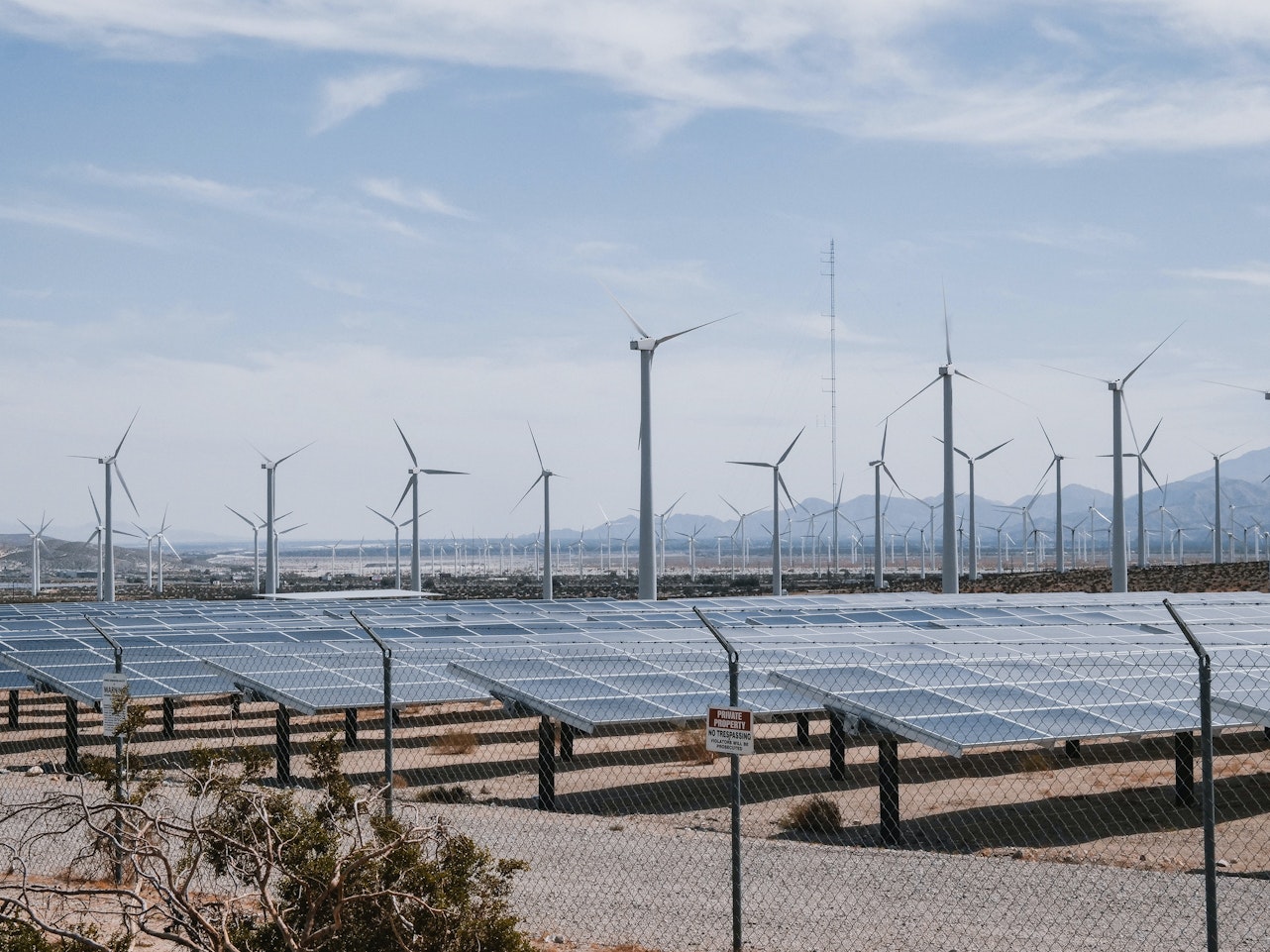Why big renewable plants are not the enemy of the community
- Published by
3 Feb, 22 / UPDATED 8 May, 23
Utility-scale solar and wind farms must play a key role in powering the global clean energy transition, but they face increasing opposition from local communities and environmentalists. This social trend is rising, particularly in countries like Spain and the US, where there has been a vast deployment of new renewable capacity over a short period.
Why is opposition to large-scale renewables growing, and how can the industry work with society to overcome objections?

Watch the recorded webinar "A utility-scale solar guide to plant interconnection for maximizing efficiency" for expert insights from industry leaders in renewable energy software solutions.
Community opposition to renewables grows
Opponents to large-scale solar arrays and wind farms cite several objections: intrusion on rural landscape views, the impact on local wildlife, glare from solar panels affecting nearby traffic, and energy companies pricing local farmers out of the market for land leases.
In the US, grassroots campaigns have resulted in several towns in New York State placing moratoriums on new solar projects, with others considering temporary bans. The opposition has also emerged in California, Nevada, Utah, and Virginia.
“Solar belongs on rooftops, near highways, commercial, industrial-zoned land, marginal or contaminated areas, not on rural-agricultural land,” the non-profit organization Citizens for Responsible Solar says on its website. “We believe that true “green” energy solutions do not involve destroying farmlands, forests, wildlife habitat, families, and homes.”
But since taking office in January 2021, the Biden Administration has approved 18 onshore renewable projects with a total capacity of 4.175GW, including eight on public lands and 10 with interconnections on public lands. The Administration aims to approve the permits for 25GW of solar, onshore wind, and geothermal energy on public lands by 2025.
Fostering community cooperation
For governments around the world to meet their clean energy targets, they need the cooperation of community groups to enable the installation of large numbers of solar panels, wind turbines and associated infrastructure.
Renewable energy companies can play a role in addressing the concerns of residents and environmentalists. They can also follow good practices that bring benefits to local communities and encourage their acceptance of utility-scale installations. There are three key advantages that large-scale renewable projects provide to communities.
Socio-Economic contributions
Large solar and wind projects can bring several social and economic benefits to communities. They provide employment for workers locally and can offer priority to economically disadvantaged groups. They support local businesses by using goods and services from suppliers in the area. And they promote dialogue with local community bodies.
One of the key advantages of hosting a project with large generation capacity is that local residents and businesses can benefit. They can receive low-cost energy supply directly from the site. And governments can reinvest tax revenues into the community. Furthermore, it will generate job opportunities.
Environmental compatibility
Solar farms can take up 2-3 hectares of land for every 1 MW of generation. While some local farmers are concerned that they will have to compete with development companies for access to land, there are opportunities to co-locate solar panels with agricultural land.
Agrivoltaics enable solar panel installations to provide shade from sunlight for crops and grazing land for livestock. Solar installations can also provide electricity for water treatment units. For example, Sundrop Farms in Australia uses solar energy for desalination to provide fresh water for crop irrigation and to power greenhouse temperature control.
Solar and wind farms can also be located on unprotected sites where they will not have a negative impact on the area’s biodiversity. It is important that developers ensure wildlife will not be affected, such as wind turbine installations that do not damage bird populations.
Circular business solutions
Renewable energy projects can take the lead within a community in their commitment to recycling and environmental impact assessment.
Companies can monitor the materials used in project construction to ensure that they are sourced responsibly and do not contribute to environmental damage. And it is vital that project developers conduct strict waste control to avoid contaminating water or soil at the site throughout the life of a project.
One of the advantages of solar energy is that panels can be removed from a site in the future without a substantial impact on the land, which can then be adapted quickly for alternative uses.
Renewable developers should commit to the removal of solar panels and other system parts for recycling, so that the materials do not end up in landfill. Recycling has an important role to play, as the mining and refining of some solar panel raw materials can be costly or in limited supply. As the operational lifespan of solar panels comes to an end, recycling can increase the availability of the raw materials needed to produce new panels providing a new source of supply as well as reducing waste.

Best practices to mitigate community opposition
It takes strategic planning to work with communities to address their concerns about utility-scale renewable installations.
Some companies are adopting good practices such as selling energy to their local communities at low prices and investing some of the revenue generated by solar and wind farms in public services such as infrastructure or schools. Companies can also provide training for workers in the local community to provide access to project jobs.
To allay concerns about the environmental impact of an installation, project designers can plan systems that are tailored to the local area, for example, agrivoltaics that enable co-locating solar with agriculture. Renewable companies can also involve local communities in project development by promoting participation in planning and permitting processes in formal and informal ways, incorporating their feedback and suggestions.
Choose RatedPower to design your solar farm
If you are designing a utility-scale solar farm, RatedPower platform can help your team to optimize the use of the site. Contact us for a demonstration.
What you should do now
Whenever you’re ready, here are 4 ways we can help you grow your solar business and reduce LCOE of your PV plants.
- Get hands-on with a free RatedPower self-service guided tour. If you’d like to learn the ins and outs of how top photovoltaic software can help your engineering team, go ahead and request your free demo. One of our solar experts will understand your current design and engineering workflows, and then suggest practical tips on how to speed up them though the right tool.
- Let's get physical, physical! Learn the latest on renewable energy and PV in the second edition of Pulse, our annual get-together full of technical workshops, inspiring talks from energy leaders and tons of networking. Learn more.
- If you’d like to learn insights, ideas and inspiration for the low-carbon energy transition for free, go to our blog or visit our resources section, where you can download guides, templates and checklists solar successful pros use.
- If you’d like to work with other passionate experts on our team, or learn more about our purpose and corporate values, then see our Careers page.
- If you know another solar designer, developer or engineer who’d enjoy reading this page, share it with them via email, LinkedIn or Twitter.
Related posts
Searching results

